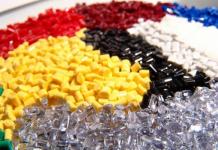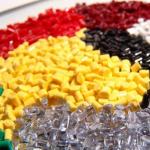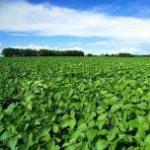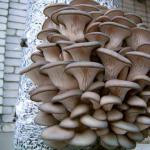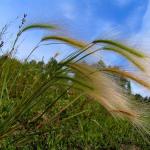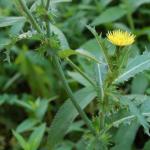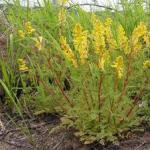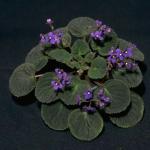soy business
Agroprofi, 30.06.09
Over the past five years, Russian soybean processors have increased their production capacity by 10 times, and they are sorely lacking in raw materials - domestic farms produce only a third of the required volume and are reluctant to expand soybean crops, although the profitability of this crop can reach 250%. What is the reason?
deficit
The profitability of growing soybeans can reach 250%, says Alexander Kochegura, head of the soybean department of the All-Russian Research Institute of Oilseeds (VNIIMK, Krasnodar). Soy is now in great deficit, and you can earn even more on it than on sunflower or corn, and, unlike these crops, it does not deplete the soil, but on the contrary, it increases its fertility.
Soy is used in three directions - food, feed and technical. The main components due to which this crop is cultivated are protein and oil. The composition of essential amino acids of soy protein is almost identical to the composition of proteins of animal origin, and the oil is easily digestible and contains fatty acids that are not produced by the body of animals and humans. In addition to oil from soybean seeds, products are obtained for the manufacture of several hundred types of various products. And the "waste" of processing - meal and cake - are valuable high-protein additives to animal feed. All these properties have provided soybeans with great popularity.
In the last year alone, about 220 million tons of soybeans were produced in the world. The largest exporters - the USA, Argentina and Brazil - are constantly increasing the production of this crop. Against the general background, Russia looks like an obvious outsider. Although, according to analysts, it has great potential and can satisfy not only the country's internal needs, but also start exporting to Europe. However, so far, according to the Russian Soybean Union, we produce about 740 thousand tons.
soy cows
The surge in popularity of soy products came in the late 90s. In the south of the country, an association of processing enterprises "ASSOIA" was established, which produced soy milk, tofu cheese, nutrient mixtures, etc. In addition, "ASSOIA" was engaged in the development and sale of equipment intended for use in shops, cafes, canteens - the so-called "soy cows". True, soon interest in such food products disappeared, and the association actually ceased to exist. Processors and scientists attribute this to the fact that the domestic media creates a negative image of soybeans.
“In printed and electronic publications, you can often find information that all soybeans used in our country are genetically modified products, although this statement is not true,” says Alexander Kochegura. – Domestic soybean farmers use in production only varieties bred using traditional breeding. The United States is another matter: almost all soybeans supplied from there are genetically modified. In addition, recently there have been publications on the Internet about the dangers of soy for the human brain. But all these assumptions are unfounded. In countries that traditionally consume soy - Japan, China - life expectancy is much higher than in many other countries.
Now the soybean industry is experiencing a rebirth. Processing volumes are growing at such a rapid pace that domestic agricultural producers cannot provide processors with raw materials in the required volumes. Products of deep processing of soy - texturates and isolates are in great demand among meat processing and dairy plants, confectionery factories. Until 2003, the demand for these components was mainly met by imports from Europe and the USA. In Russia, there were practically no enterprises for deep processing of soybeans.
“During the existence of the union, we have managed to increase the capacity of soybean processing enterprises by 10 times,” says Anatoly Ustyuzhanin, director of the Russian Soybean Union. – In the last five years alone, 11 soybean deep processing plants have been built. Already today we are able to process about 3 million tons of soybeans, and we produce less than 1 million tons.
Even in times of crisis, according to SOKO President Oleg Shirinyan, processors need at least 1.5 million tons of soybeans. Therefore, imported raw materials have to be purchased by those enterprises whose capacities are located in traditional zones of sowing.
Processors are trying to work directly with agricultural producers, says Anatoly Ustyuzhanin. Such a scheme of work, in his opinion, is beneficial to both.
The Koshkinsky and Dimitrovgradsky Butter and Cheese Plants, owned by the ALEV Agro-Industrial Union, actively cooperate with agricultural producers. They enter into agreements with enterprises of the Ulyanovsk and Samara regions on advancing the cost of purchasing seeds, plant protection products and guaranteed purchase of seeds at fixed prices. Unfortunately, cases of such cooperation are rare.
“A domestic agricultural producer is always sure that he will be deceived - they will offer a lower price or not buy the products at all,” believes Oleg Shirinyan. Hence, in his opinion, all the difficulties. In addition, cooperation is hindered by intermediaries who buy up the harvest immediately after harvesting at minimal prices. The difference in prices after cleaning and in May, according to Shirinyan, can reach 150%. As a result, not only producers suffer, but also processors, who are forced to raise the price of their products.
Soy Program
In 2003, the Ministry of Agriculture approved the program for the development of production and deep processing of soybeans in the Russian Federation from 2003 to 2010 proposed by the Russian Soybean Union.
“Over the past five years, within the framework of the program, we have managed to double the volume of soybean production (up to 750 thousand tons per year), increase the capacity of soybean processing enterprises by 10 times and at the same time expand the feed business,” says Anatoly Ustyuzhanin, director of the Russian Soybean Union. – We focused on cavitation technologies for processing soybeans for feed and food purposes. Cavitation is the formation of cavities in a liquid (cavitational bubbles, or caverns) filled with gas, steam or a mixture of them. As a result of using this phenomenon of hydrodynamics, the sediment (okara) is about 3-4% of the total mass of the finished product, which is 2-3 times less than with traditional technology. In addition, the quality of soybean protein is significantly improved, it is better absorbed by the human and animal body.
To implement its program, the soybean union actively cooperates not only with processors, but also with large breeding centers, including the All-Russian Research Institute of Soybeans in the Far East, the All-Russian Research Institute of Oilseeds, the Belgorod Agricultural Academy, the Scientific Research Institute of Agriculture of the South-East, the Ryazan NIPTI AIC.
Restraining factor
Today, domestic soybeans have a high purchase price and stable sales, but soybean sown areas are still not enough and unstable. For many years, the limiting factor in soybean cultivation was the lack of suitable varieties for different climatic zones, now this problem has been solved.
“Due to the selection of new varieties, the soybean yield increased by 10 c/ha, and the bean ripening period was reduced by 27 days,” says Anatoly Ustyuzhanin. – Soybean range is now significantly expanded. If earlier more than 70% of the crops of this crop were concentrated in the Far East, now it is cultivated in the Central Chernozem and Central zones, the Volga region, the Urals, and Western Siberia. In the Belgorod region, for example, the soybean field has increased 10 times, in the Krasnodar Territory - twice.
Scientists from the Kaliningrad Research Institute of Agriculture also argue that it is possible to successfully grow soybeans for seeds in the conditions of the Kaliningrad region. The varieties of the Republic of Belarus - Yaselda and Pina - stand out here. In some years, they are able to produce up to 30 c/ha. In many ways, the expansion of soybean crops is hindered by frequent droughts. According to Oleg Shirinyan, the previous four years were very dry, especially 2007.
“Growing sunflower is much easier than soybeans,” says Alexander Kochegura. – In addition, even in dry years, it gives a high yield, which cannot be said about soybeans.
Therefore, when sunflower and soybeans became equal in price, interest in the latter decreased markedly. According to Alexander Kochegura, if in 2006 in the Krasnodar Territory soybeans were sown on an area of 170 thousand hectares, then in 2008 Kuban farmers allocated only 82 thousand hectares for this crop. This year, the price of soybeans is 70-80% higher than that of sunflower, and, perhaps, soybean sowings will increase again this year.
If the soybean yield is at least 15 centners per hectare, it can become a worthy competitor to both sunflower and corn, Oleg Shirinyan is convinced. According to his observations, large agricultural enterprises not only do not refuse to grow soybeans, but, on the contrary, expand the area under it. For example, in the Kuban agricultural holding, technologies and new varieties developed by SOKO specialists are used, and the soybean yield without irrigation is one of the highest in the region - about 30 centners per hectare. In 2004, without irrigation, a crop of 46.7 c/ha was obtained.
Despite the fact that the most favorable area for growing soybeans is the south of Russia, soybean growing is developing most dynamically in the Central Black Earth Region, especially in the Belgorod region - over the past five years, soybean crops have increased 10 times here, but the neighbors in the Voronezh and Kursk regions have soybean crops are low, reports Oleg Shirinyan.
- The Belgorod region is a leader in the field of animal husbandry and poultry farming, - says Anatoly Ustyuzhanin. - There is a great need for high-quality high-protein feed.
In order to meet the needs of animal husbandry, in 2006 the leadership of the Belgorod region signed a resolution "On the stimulation of soybean production." As part of this project, local soybean producers receive subsidies from the regional budget to compensate for part of the costs associated with the purchase of pesticides. According to Oleg Shirinyan's forecast, as early as next year soybean production in the Belgorod Region may reach comparable indicators in the Krasnodar Territory.
soy with rice
According to Alexander Kochegura, in Russia the average soybean yield is about 9 centners per hectare, which is much lower than in the world. Although the potential yield of this crop is at least three times higher. For example, in Argentina, an average of 40 q/ha is harvested, according to the CEO Institute for Agricultural Market Studies (IKAR ) Dmitry Rylko.
Even in the Krasnodar Territory, where, it would seem, the most favorable conditions for growing soybeans, they do not get 30% of the crop. Last year, the average yield was 15.2 q/ha. Experts explain this fact by shortcomings in the field of soybean cultivation technology. Sowing dates, plant density norms, etc. are often violated.
“For our region, the recommended sowing dates are from April 25 to May 10, and local farms usually sow soybeans until the end of May,” Kochegura gives an example. – In addition, high weediness of the fields prevents high yields.
But, perhaps, the biggest problem for soy-breeding today is the lack of moisture. According to the observations of Anatoly Ustyuzhanin, a drought can take away half or even the entire soybean crop. Therefore, now the soybean union is actively engaged in the promotion of soybean farming on irrigated lands.
“Cultivation of soybean under irrigation allows not only to stabilize its production, but also to increase the yield by 2-3 times,” says Ustyuzhanin. – Even in dry years, the yield is reduced by only 10%. In addition, the profitability of soybean cultivation under irrigation is two times higher than on rainfed.
In the Krasnodar Territory, soybeans are successfully cultivated in rice crop rotations. According to experts, this is a very promising area, since both crops - rice and soybeans - are highly profitable and give a good harvest.
For example, last year at the Anastasievskoye farm (Slavyansky district) in the rice system, it was possible to obtain a record soybean yield of 55.1 centners per hectare, Alexander Kochegura reports. In addition, soybean has a beneficial effect on rice: like all legumes, it is able to provide itself and the subsequent crop with nitrogen nutrition. For this to happen, it is desirable to introduce special bacteria into the soil. For this, the seeds are treated with the Rizotorfin biological product before sowing. Moreover, in the conditions of the Krasnodar Territory, in this case, it is not recommended to apply a single kilogram of mineral fertilizers, says Alexander Kochegura.
“The use of nodule bacteria culture (inoculants) not only has a positive effect on the yield of soybeans and subsequent crops, but also increases soil fertility,” says Oleg Shirinyan. – The profitability of its application is about 1000%.
True, according to Shirinyan, in the last two years there have been difficulties with the purchase of the drug.
“Today, only one or two companies produce inoculants in Russia,” says Shirinyan. - This market is largely monopolized. Two years ago, manufacturers switched to a new production technology, as a result, the drug turned out to be absolutely unsuitable for use. Therefore, now we use inoculants that we buy in Brazil.
Alexander Kochegura notes that there are about a dozen soybean cultivation options, both traditional and more advanced. For example, at the Nezlobenskaya seed-growing and technological station in the Stavropol Territory, soybeans have been grown ecologically for 25 years, without the use of pesticides and mineral fertilizers. In this case, soybeans are sown not in late April - early May, but in June.
“In our zone, we sow 30-60 days later than usual, and we use this time to provoke the germination of weed seeds and their destruction,” says Nikolay Grinev, director of the station. – In addition, during this time the biological chain of diseases and pests is broken. We do not apply mineral fertilizers at all, as we have fertile soils, that is, our products are environmentally friendly. For 25 years, the average yield has been 19.1 centners per hectare.
According to the expert, the technology can be successfully applied in the Southern Federal District, where short-day varieties are grown. In Argentina, many farmers use the technology of double harvesting, that is, they manage to harvest two crops per season from one field: first wheat, then soybeans, Dmitry Rylko reports. Although the yield of each crop is reduced, weather and price risks are diversified. This technology is also acceptable for the south of Russia, experts say.
Varieties
Depending on the soil and climatic conditions and the needs of the enterprise, breeders offer varieties with different ripening periods: from ultra-early to mid-ripening. For cultivation in the Central zone, varieties of Ryazan breeders are suitable - Mageva, Svetlaya, Okskaya. In addition, it is worth using the Belarusian varieties of the Soya-Sever company - Yaselda and Pripyat. All these varieties are of the so-called northern ecotype. They have a short ripening period, usually up to 110 days. In the Central Chernozem region, varieties Luchezarnaya, Belgorodskaya 48, etc. are released. According to Oleg Shirinyan, ultra-early varieties released in the southern region are also suitable for the conditions of the Central Black Earth zone.
“For example, the yield of SOKO's Selecta 101 variety will be even higher there than in the Krasnodar Territory, due to the longer growing season,” says Shirinyan. - And recently we sent for state tests two of our new ultra-early varieties, Zlata and Bara, created specifically for the Central Black Earth Zone. In total, four of our varieties are included in the register: Selecta 101, 201, 301 and 302. In three years, this group of varieties, according to Shirinyan, has conquered 50% of the soybean area in the Krasnodar Territory.
“In our zone (southern Russia), ultra-early varieties, such as Lira or Slavia, are recommended to be sown if they want to grow soybeans as a second crop,” says Alexander Kochegura. – For example, if winter wheat or barley is harvested early and there is a sufficient supply of heat, you can get a second crop of soybeans from the same area without deteriorating soil fertility.
True, Kochegura notes that the yield of such varieties is lower than that of mid-season ones.
– In addition, early maturing varieties can be sown if soybeans are grown as a predecessor for winter wheat in the northern part of the region, – Alexander Kochegura continues. - And in the central part, for these purposes, we offer mid-season varieties (Vilana, Renta), wheat is sown here later - from October 1.
Soer 1, Sauer 3, Sauer 4, Sauer 5, Sauer 7 varieties are suitable for the conditions of the Volga region. And in the Primorsky Territory, varieties of VNII soybeans - Lydia, Aktai, Zakat, etc. are in demand. In addition to traditional varieties, breeders also offer varieties for special purposes.
“We have varieties for mixed crops of soybeans and corn for green fodder and silage,” says Alexander Kochegura. – Previously, we were engaged in varieties for the production of soy milk, canned food, but, unfortunately, now there is no demand for them. Although, for example, the protein content of our variety Valenta reaches 48%.
Soy harvesting features
Soy is a very plastic crop. No special equipment is required for its cultivation. But to avoid losses during cleaning, experts give a few simple tips. Ultra-early varieties are able to ripen themselves. True, in conditions of high humidity, soybeans ripen for a long time and unevenly. If the moisture content of the seeds reaches 40-45%, then pre-harvest desiccation with the preparations "Reglon Super", "Basta" is necessary.
Soybean beans are attached low, so harvesting is carried out on a low cut, actually along the ground. For these purposes, it is necessary to convert combine harvesters to a cut of less than 10 cm or use special soybean headers produced by some manufacturers. For example, Agromashholding manufactures headers under the ZhS brand with a working width of 5.6 and 7 m, and Claas has models from 5.1 to 12 m in the line. According to Igor Kuprinenko, product manager of Claas Vostok, all headers This row is suitable for Tucano and Lexion combines. Mikhail Mavrin, head of the directorate of agricultural technologies at Agromashholding, advises, if possible, to use specialized headers. In this case, losses during harvesting, according to him, will be much less. Especially in regions where there is a high probability of drought, as the plants there are stunted.
“The soybean header has a so-called flexible table, which allows it to make a low cut, which is extremely important when harvesting soybeans,” explains Igor Kuprinenko. – The cutting mechanism consists of several segments, characterized by high plasticity. In order to efficiently feed the material into the cutting device, on some headers the tines are made of plastic, otherwise damage to the product cannot be avoided. Due to this, the cost of the harvester increases slightly. The header can also be converted to harvest other crops.
In addition, Alexander Kochegura recalls that the number of revolutions of the threshing drum must be reduced to 400-450. The speed of the combine should not exceed 3.5-4 km/h.
Soy in the world
216 million tons will be the world production of soybeans in 2008/09 MY, 5.3 million tons less than the previous season, according to the German analytical agency Oil World.
114.75 million tons of soybeans will be harvested in the countries of the Northern Hemisphere, 9.69 million tons more than last year. Growth will occur due to an increase in production in the United States (up to 80.54 million tons).
101 million tons of soybeans will be harvested by the producing countries of the Southern Hemisphere, 15.02 million tons less than the season before, mainly due to the drought in Argentina.
223 million tons will be world consumption of soybeans in 2008/09, 7.27 million tons less than the previous year.
54.6 million tons - the size of the ending stocks of soybeans in the world this year (7.5 million tons less than last season).
A highly productive crop, characterized by unpretentiousness, soybeans have recently begun to be grown in our area. At the same time, more and more areas are sown with this crop every year. If you miss the details and advantages of growing this particular type of plant, you can simply note the profitability of this business.
In order to get the most out of your site, you must also take into account the features of the agricultural technology of this crop. This is what will be discussed in our article.
Conditions and terms of landing
One of the most important issues is to determine the optimal landing time. In this case, you can make a mistake by a very significant difference in the yield, therefore, in some countries, such as Argentina and the USA, the date of sowing soybeans is determined with an accuracy of three days.
Too early planting will lead to a long pecking of the sprouts. Seedlings will be thin and weak, and seed germination will drop noticeably. However, late planting also negatively affects the final yield. In this case, soybean is poorly acclimatized, the seeds will not receive the moisture they need, and during the heat some of the plants may die. That is why soybean planting dates should be determined individually for each region and climatic conditions. Usually landing takes place from the third decade of April until May 10-15.
On the video - the technology of growing soybeans:
Late and mid-season varieties are planted first. Early and mid-early - towards the end of the landing deadline. A mandatory criterion is that the soil warms up at least 8 degrees Celsius. It is best to apply seeds at a temperature of 12 to 14 degrees Celsius, when the maximum germination of planting material is ensured.
Selection of a suitable variety, seed treatment before sowing
The bred soybean varieties meet the requirements of our climatic zones to the maximum and are characterized by high yields. At the same time, it is not recommended to use the same variety in all areas and for several years in a row. The best result will give a thoughtful crop rotation and rotation of varieties.
Also, every gardener must understand how to do it right.
The best predecessors for soybeans are:
- Cereal crops of winter and spring cultivation.
- Corn.
- Potato.
- Sugar beet.
You can not plant soybeans after other representatives of legumes, cabbage and sunflowers. These plants have common pests and characteristic diseases, so the risk of re-infection of the soil is high. Soy is considered a good predecessor for any other crop, because it enriches the soil with nitrogen useful for plant growth. This specific cultivation of the crop will allow the most useful use of the land, and will also create a precedent for good harvests in different years and with different crops.
The entire sowing process must be carried out within a period of five days, otherwise the yield will drop sharply.
In addition to climatic and weather conditions, the selected variety also has a significant impact on the yield of soybeans. Modern hybrids boast improved performance and really reliable pest protection.
Overview of popular soybean varieties:
| Vegetation period: | Oil content of culture: | Protein content: | plant height: | Attachment Height of Bottom Bobs: | Weight of 1000 seeds: | Seed yield: | Note: | |
| In the main crops: | In repeated crops: | |||||||
| "Chara" is an early ripe highly productive variety. | ||||||||
| 105 - 110 days after sowing. | 21 – 22 %. | 40 – 42 %. | 100 - 110 cm. | 13 - 15 cm. | 140 - 160 gr. | 4 t/ha. | 2.2 t/ha. | |
| "Duar" is an early ripening highly productive variety. | ||||||||
| 102 - 106 days after sowing. | 20 – 21 %. | 41 – 43 %. | 100 - 110 cm. | 15 - 17 cm. | 160 - 170 gr. | 4 t/ha. | 2.2 t/ha. | |
| "Vilana" is a mid-season drought-resistant variety. | ||||||||
| 117 - 120 days after sowing. | 22 – 23 %. | 40 – 41 %. | 100 - 110 cm. | 14 - 16 cm. | 160 - 180 gr. | 5.7 t/ha. | Not used. | Resistant to peronosporosis and ash rot. |
| "Dream" is an early ripening highly productive variety. | ||||||||
| 100 - 105 days after sowing. | 20 – 21 %. | 40 – 43 %. | 100 - 105 cm. | 13 - 15 cm. | 140 - 160 gr. | 3.7 t/ha. | 2 t/ha. | Resistant to lodging of plants and cracking of beans during overmature. |
| "Slavia" is an early ripening cold-resistant variety. | ||||||||
| 98-103 days after sowing. | 23 – 24 %. | 40 – 41 %. | 95 - 110 cm. | 13 - 14 cm. | 160 - 190 gr. | 3.9 t/ha. | 2.2 t/ha. | Resistant to peronosporosis and stem cancer. |
| "Lira" is an early ripening highly productive variety. | ||||||||
| 95 - 100 days after sowing. | 21 – 22 %. | 41 – 42 %. | 70 - 80 cm. | 10 - 12 cm. | 150 - 180 gr. | 3.4 t/ha. | 2 t/ha. | |
| "Duniza" is an early ripening highly productive variety. | ||||||||
| 95 - 100 days after sowing. | 23 – 24 %. | 40 – 43 %. | 80 - 90 cm. | 12 - 14 cm. | 160 - 180 gr. | 3.2 t/ha. | 2 t/ha. | Quietly tolerates drought, has a short growing season. |
The selected varieties differ little in terms of agricultural technology. Seeds must be inoculated before planting. This is the processing of planting material with special solutions. They contain beneficial bacteria that help fix nitrogen from the air and soil. This significantly increases the chances of survival of the sprouts, and also increases the volume of the crop. 
In addition to bacteria - inoculants, the seeds are treated with fungicide, potassium humate (stimulates germination), as well as drugs from pests and characteristic diseases. All these solutions are used in turn, depending on the priority of the task. It is believed that such a directed action is much more convenient and economical than introducing chemicals into the soil.
In this way, the process and the amount of substances used can be controlled, without undue threat to the seedbed.
An important point: seed treatment should be carried out no later than a day before sowing. Otherwise, the growth of bacteria on the surface of the beans will make them sticky and make it difficult to plant further.
Care, cultivation technology
Seeds are applied to shallow loose soil. Usually, the method of disk plowing is used (if a grain crop was sown on the field earlier) or autumn plowing (after corn and sunflower). Such manipulations make it possible to successfully deal with the rhizomes of annual weeds. To remove perennial weeds, special herbicides are used, the choice of which depends on the specific type of weeds in your area.
When to sow alfalfa as green manure will tell.
Soybean sowing is carried out according to the following indicators:
- The minimum depth of touching is from 3 to 5 centimeters.
- The maximum depth of touch is six centimeters.
- When the top layer of the earth dries out, it may be necessary to seal up to 10 centimeters. This usually happens if the landing is carried out later than the required time.
- Distance between rows from 15 to 45 centimeters. This indicator is affected by the height and overall dimensions of the plants.
- The seeding rate for ultra early (vegetation period up to 90 days) varieties ranges from 800 to 900 thousand units/ha.
- The seeding rate for early-ripening (vegetation period from 91 to 105 days) varieties is from 700 to 750 thousand units/ha.
- The seeding rate for mid-early (vegetation period from 106 to 125 days) varieties ranges from 550 to 600 thousand units/ha.
- The seeding rate for mid-season (vegetation period from 126 to 135 days) varieties ranges from 450 to 500 thousand pieces/ha.
- The seeding rate for late-ripening (vegetation period from 140 to 159 days) varieties ranges from 350 to 500 thousand units/ha.
But how white mustard is used as green manure in the spring, and where it can be used additionally, will help to understand.
On the video - how soybeans are sown:
Recently, a narrow-row soybean planting pattern has been increasingly used. At the same time, yields increase significantly, because the plant captures light rays better during the laying of seeds. In addition, the leaf area index increases, which stimulates the process of photosynthesis.
Further care after landing is reduced to ensuring the following conditions:
- Cultivation of plantings from weeds.
- Use of insecticides to control common pests.
- Fertilizing with mineral complexes on the basis that soybeans “take” 124 kg of nitrogen, 102 kg of potassium, 34 kg of calcium, 22 kg of phosphorus, 23 kg of sulfur and 18 kg of magnesium from one hectare. All these elements except nitrogen (soil bacteria and seed inoculation are responsible for its production) must be replenished. This is best done when harrowing the ground in the spring, but with poor growth or seedling death, the elements are applied during the growing season.
- Trace elements are also important for plant development, so the seeds needed to sow one hectare of land must be treated with manganese (207 grams), copper (75 grams) and iron (865 grams).
- Soybeans do not grow in acidic soils, so be sure to check its acidity before planting. The optimal level is 6.0 - 7.0 pH. The minimum level is 5.5 pH.
- It is impossible to carry out any manipulations with the culture during flowering.
- Harvesting occurs when the leaves and stems dry out. Beans at this time are easily separated from the valves.
- Harvesting is carried out with a combine at a low cut. Further drying and transportation should also take into account the characteristics of the culture and its storage.
He will tell about the technology of planting winter wheat as green manure.
Top dressing should be carried out after soil analysis. This is the best method for determining fertilizers. With a lack of elements, the growth of shoots is inhibited, and fruits are difficult to form.
Growing as a business

The profitability of a soybean growing project largely depends on successfully selected varieties, the availability of the necessary equipment, as well as timely agricultural practices.
Most agricultural enterprises are focused on this crop. Soy grows well in our climate and is not demanding on the quality of the soil. The use of modern herbicides and stimulating solutions will also help to get a high yield, with minimal labor.
Soybean cultivation enjoys well-deserved popularity among modern farmers. This crop is characterized by high productivity, is not demanding on soil composition and climatic conditions. The main points of successful cultivation and planting of soybean seeds in our regions are described in the information of this article.
Read about the technology of growing winter wheat.
Using the provided Sample Soybean Processing Complex Business Plan as a starting template and applying it to your specific conditions, you will be able to easily create your Soybean Processing Business Plan.
Soybean Processing Complex Business Plan
Brief description of the project
Construction of a powerful complex for processing soybeans, which includes three independent production facilities. All production facilities are brought together in a single technological chain, which is based on a waste-free technology for using the properties of soybeans.
The main goal of this project is to provide healthy high-protein dietary food products from soybeans to the Central and Central Chernozem region of the Russian Federation.
As part of the project, it is planned to build a powerful complex for processing soybeans, which includes three independent production facilities. All production facilities are brought together in a single technological chain, which is based on a waste-free technology for using the properties of soybeans.
Object 1 "Production of textured vegetable protein from soybeans"
involves the use of environmentally friendly soybean processing technology based on the thermoplastic extrusion process. The dry extrusion technology underlying the planned production was patented by INSTRA-PRO International (USA) in 1969 and is used in more than 90 countries around the world.
The purpose of the construction of this facility is to provide the country's market with high-quality, protein-balanced food products (soy flour and soy protein texturate), the cost of which is 2-3 times lower than the cost of basic food products containing protein (meat, poultry, milk, etc.). d.). Also, soy flour and textured soy protein, being part of other food products, such as sausages, cheeses, bakery and confectionery products, can reduce the cost and increase the dietary properties of the latter.
Object 2 "Production of soy dairy products" involves a technology for processing soybeans based on the Agrolactor plant by extracting a protein suspension with its subsequent processing into dairy products.
The purpose of this program is to provide the country's market with high-quality, high-protein soy milk and sour-milk food products (milk, yogurt, cottage cheese, cheese, mayonnaise, etc.) with unique dietary properties, which are not inferior in taste, but cheaper than their animal-based counterparts.
Object 3 "Compound feed plant" is based on the use of waste from object 1 (soybean husk) and object 2 (okara) as raw materials for the production of high-quality protein combined mixtures for the development and maintenance of the viability of livestock and poultry agro-complexes in the Moscow region and Central Russia.
The strategic advantages of the project are an almost unlimited sales market, since the industry of processing soybeans to obtain testurated protein and soy dairy products in the country is extremely poorly developed, and the demand for its products around the world is characterized by a persistent increasing trend.
This project also allows:
1. Ensure the production of import-substituting products (vegetable oil and soy texturate are included in the priority nomenclature of import-substituting products established by the Ministry of Economy of the Russian Federation);
2. Create new jobs (more than 40).
The indicated advantages of the project and its national significance are a prerequisite for the construction of similar plants in various regions of the Russian Federation in the future. Thus, the proposed project can be considered as a pilot one.
Soy is one of the most popular crops in crop production. It belongs to the legume family, has a high yield and grows on almost any type of soil, with the exception of sandy. Soybeans contain a large amount of vegetable protein. They have the widest application: they are used for cooking various dishes and in food production (protein products for vegetarians, cheeses, sausages, meatballs, soups, etc.), as well as feed for farm animals. Bean seeds are used to make soy flour, which in turn is used to make soy meat. Soybean oil (which is considered one of the best vegetable oils) and soy milk (white seeds are used for this) are obtained from the seeds. Soy liquid sauce is prepared from fermented soybeans. Pressed beans are used to produce soybean meal.
Demand for soybeans is consistently high. It costs much more than wheat and is much less subject to price fluctuations. The demand for soybean and its products is increasing every year with the growth of poultry meat production and the developing livestock and pig breeding. For all these reasons, soybean farming is a profitable and highly profitable business. However, as in any other direction, there are certain features that must be taken into account.
Soy is a demanding crop
The main growth phases of soybean include germination (from seed to shoot), emergence (from cotyledons to primordial leaves), formation of the first trifoliate leaf, branching, bud emergence, flowering, pod formation, seeding and maturation. Under favorable conditions, soybean seedlings can be seen already on the 6-9th day after sowing. Soybeans no longer grow during seeding, and during the ripening of the beans, the plants shed their leaves. In most varieties, ripe beans do not crack, and the plants themselves do not fall, which makes it easier to harvest.
For some reason, it is widely believed that soy is an unpretentious plant. In fact, it is a light-loving and heat-demanding culture. With a lack of lighting, the plant stems and leaf cuttings lengthen, which prevents the formation of lateral shoots and beans, or even the fall of previously formed ovaries in the lower part of the plant. The greatest need for heat falls on the phases of flowering and fruit formation. The optimum air temperature during this period is 21-22°C. At a temperature of 14 ° C and below, the plant does not grow and does not develop. At the beginning and end of the growing season, the need for heat is much lower. Moreover, at this time, plants even relatively calmly tolerate frosts down to -2-3.5 ° C.
In addition to light and heat, soybean needs a lot of moisture, but this need also depends on the growth period of the plant. Soybeans are relatively drought tolerant in their early growth period, before flowers appear, although lack of moisture can have some negative effect on plant productivity and lower bean development. But with a lack of moisture during flowering, the formation of ovaries and the filling of seeds, you should not count on large volumes of the crop. With the intensive development of green mass, the area of the evaporating surface of the plant increases, therefore, with the beginning of flowering, moisture consumption also increases. During the period of flowering and the formation of beans, soybeans are also demanding on air humidity. At low humidity during this period, new ones are not formed and existing flowers and beans are shed.
Experts advise growing soybeans in weed-free fields with optimal nutrient and moisture supplies. Do not forget that for a good harvest, this plant needs two to three times more nutrients than cereals. This means that the soil for growing soybeans must be fertile and cultivated, otherwise you cannot do without the additional cost of applying a large amount of fertilizer. There are no particular preferences for soil types, but neutral or slightly acidic (pH 5.5-6.5), well-permeable soil rich in phosphorus, humus and calcium is best suited.
Like all legumes, soybean is a valuable crop in crop rotation. It can be sown in fields where grains (best of all - winter wheat), corn, sugar beets, potatoes, perennial grasses grew before. Other leguminous crops, perennial leguminous grasses, cabbage crops and sunflowers are unsuitable as predecessors because of the danger of the spread of bacteriosis and other diseases. Part of the crops susceptible to sclerotinosis (for example, rapeseed, soybean, sunflower) should not exceed 33% in the crop rotation. After soybeans, it is recommended to sow the field with winter wheat, other grain crops, corn, rapeseed, fodder and vegetable crops. Keep in mind that late crop harvesting in some regions of our country does not allow growing winter crops after soybeans. Soy greatly impoverishes the soil with nutrients, so it must be borne in mind that it is recommended to return soy to its original place no earlier than after two years. Thus, you will need to regularly look for new crop areas for each year.
As for the regions suitable for growing soybeans, it all depends on the correct choice of varieties. More than 80% of soybean sown areas in our country are located in the Krasnodar Territory and the Far East (Amur Region, Primorsky and Khabarovsk Territories). The main soybean varieties are cultivated here - Venera, Primorskaya 13, Primorskaya 301, Primorskaya 69, Primorskaya 81, Primorskaya 529, Hodson, VIR-14, Vityaz-50. Soer 1, Sauer 3, Sauer 4, Sauer 5, Sauer 7 varieties are suitable for the Middle Volga region, and early and mid-ripening varieties Belgorodskaya, 48, Svetlaya, Yaselda, Luchezarnaya are suitable for the central strip. Belor, Okskaya, Mageva varieties are characterized by early maturity and at the same time good yield.
The yield in the most favorable conditions of the North Caucasus reaches 40-45 centners per hectare, in Primorye and in the central zone - more than 20 centners per hectare. In the Ural regions, the yield is about 10-15 centners per hectare. True, wheat yields in this region are about the same as soybeans, and given the fact that soybeans contain three times more protein than wheat, it still turns out to be profitable to grow this crop even here.
Soybean varieties differ not only in terms of requirements for agro-climatic and natural conditions, but also in terms of purpose. For example, there are varieties intended for oil-feed use or food-oriented soy protein production. It is also necessary to take into account the purchase price, composition, ratio of the main ingredients of the grain and the yield of a particular variety. Please note: in our country it is forbidden to grow genetically modified soybeans, although it has become widespread abroad due to the fact that this crop is not so demanding and cheaper than ordinary soybeans.
soybean cultivation
The field intended for crops must be prepared in advance. First, in the fall, one or two peelings are made to a depth of 8-10 cm and fertilizers are applied for plowing. If grain crops were previously grown on this field, then fertilizers are applied to a depth of 22-25 cm, and if corn, then to a depth of 25-30 cm. In early spring, heavy, medium or light harrows are harrowed across or at an angle to the direction of plowing. In principle, the pre-sowing cultivation of the field is not much different from the cultivation of the soil for other legumes. Its main goal is the destruction of weeds and the preservation of moisture. If the field was not leveled in autumn, if it is littered with weeds or carrion, during a long, cold winter, cultivation is carried out in the spring to a depth of 6-8 cm, followed by rolling. It allows you to raise the temperature of the seed bed by a couple of degrees and stimulates the germination of weeds, which are then removed. For seedbed cultivation, which is carried out to a depth of 4-5 cm across or at an angle in the direction of previous cultivations, fallow or beet cultivators with flat-cut shares will be required. The field for sowing should be as flat as possible and without lumps. This is due to the fact that soybeans are located quite low. An uneven surface makes harvesting difficult. The height of the ridges and the depth of the furrows should not exceed four centimeters.
Soil herbicides are applied after sowing to the emergence of seedlings using harrows to a depth of at least three centimeters or ring-spur rollers (in this case, the effectiveness of nitrogen-fixing bacteria increases). If there are rhizomatous and root-sprout weeds on the field, then pre-sowing treatment is recommended not to be carried out, but to wait for the wheatgrass to grow to 10-15 cm and sow. Then, 3-4 days after sowing, before soybean seedlings appear, the fields are treated with a roundup herbicide of continuous action. Fertilizer consumption is 10-20 kg/ha of nitrogen, 15-30 kg/ha of phosphorus and 25-60 kg/ha of potassium.
Seeds must be dressed before sowing, and directly at sowing they are inoculated with nodule bacteria (rhizotorphin). Conventional dressing machines are not suitable for inoculating soybean seeds, since rhizotorphin particles are large enough and do not pass through the nozzle and filters of conventional equipment, and rhizotorphin in liquid form is more difficult to use. Some farmers use a concrete mixer for this, others carry out inoculation in the back of a truck, followed by breaking up the resulting lumps in a seeder. The consumption of the working solution is about 70-80 liters per 1 ton.
Some farmers do not use rhizotorphin, but before sowing they add ammonium nitrate to the soil. On the one hand, this increases the cost of production, but allows you to ensure good yields.
Sowing is carried out in the third decade of April - the first and second decade of May when the soil warms up to a temperature of 10-15°C. Late-ripening varieties are sown first, and only at the end - early-ripening ones. Seeds are sown to a depth of 450-700 mm. Row spacing is 0.4-0.6 m. Seeding rate depends on plant variety, sowing method and weed control. The average sowing density is 35-40 seeds per meter. With an increase in the row spacing, the seeding rate also increases by 10-20%.
After the emergence of seedlings, it is necessary to regularly destroy weed plants and loosen the row spacing. After the appearance of 5-6 true leaves, the plants begin to bloom. At this stage, nitrophoska (mineral nitrogen-phosphorus-potassium fertilizer) is introduced into the soil, watered abundantly and covered with earth. The ripening period ranges from 85 to 245 days, depending on the variety and climatic conditions of the growing region. For example, early soybean varieties ripen by the end of July, and late varieties by October. The crop is removed after the leaves fall and the beans acquire a grayish color. Before digging the site, the stems of the plants are pulled out, and the fallen leaves are buried in the ground to speed up their decay. Before threshing, the beans are laid out in the sun, where they are opened or husked, then winnowed and poured into bags. You can also use ordinary archers to store soybeans. The main thing is that the humidity level in it does not exceed 14-15% (optimal - 12%). Soybeans that are too wet can be dried using special equipment, but this is too costly a process that significantly increases the cost of the finished product.
The yield depends on the region, on the variety and on weather conditions. The average yield without irrigation is 10 centners per hectare, and with irrigation - 25 centners per hectare. Early varieties give the highest yield in most regions.
Experienced farmers know that sowing and growing soybeans is not the most difficult thing. It is much more difficult to harvest the resulting crop. Combines are used for this (usually "Don"). Although the soybean crop must be harvested in a short time (for some varieties it is only 3-5 days), otherwise the beans will crack and crumble to the ground, but it is very difficult to do this even with a sufficient amount of equipment. One harvester can harvest a maximum of 20 ha per day, provided the fields are well cultivated and free of weeds. But in fact, this figure is much less - about 5 hectares. And even in this case, the yield losses are very significant. During harvesting, it is necessary to ensure that the soybean stalks do not fall into the combine drum, otherwise there is a high risk of breakage.
To grow soybeans, you will need the following equipment: a pneumatic seeder (sunflower, grain or beet seeders can be used), a cultivator, equipment for inoculation and harrowing, harvesters.
The profitability of this business is 25%. To increase the profitability of the business, experts advise purchasing an extruder for the production of soy "meat". This is an inexpensive and fairly compact equipment that allows for the processing of beans. The product yield is up to 25 tons per 30 tons of feedstock.
Soy is one of the most popular crops to grow. This is a plant from the legume family, its peculiarity is expressed in high yields and the ability to grow on almost all types of soil, except for sand. Soy contains many vegetable proteins, which is why it is widely used in the field of food production.
Growth, favorable conditions for soybeans
The growth of this plant is divided into phases: the phase from sowing to the first seedlings, the appearance of initial leaves, the formation of branches, the appearance of color, the development of the bean, the ripening of fruits. If all conditions conducive to good growth of soybeans are maintained, the first seedlings will be visible on the sixth, ninth day. To ensure pleasant growth conditions, soybeans need: full lighting to ensure high-quality crop growth, heat, depending on the growth phase, 20-21 degrees Celsius will be optimal, moisture in the right amount, soybeans tolerate drought without problems during the beginning of their growth.
The best place to grow soybeans will be a field with a complete combination of nutrients, cleared of harmful plants.
Growing process

The place where the sowing is planned must be prepared for this. In autumn, you need to do one or two peelings, eight to ten centimeters deep, and apply the right amount of fertilizer. Transversely with respect to plowing, with harrows of any kind, during the end of winter, harrowing is carried out. The processing of the crop can be complicated by such a factor as the uneven surface of the fields. Ridges and furrows should have dimensions equal to no more than four centimeters.

Before sowing, you need to prepare the seeds, more precisely, during sowing, the seeds must go through the process of treatment with rhizotorphin. For such actions, standard machines will not suit you, because of its size, rhizotorphin will not pass through the filter and nozzle of standard equipment, and using it in liquid form is an even more complicated and less profitable process. Even among farmers, ammonium nitrate is used. It is used to enrich the soil with it before sowing. It relatively increases the yield, but at the same time the overall cost.

As a legume, soybean, like its relatives, is valuable in terms of crop rotation. It grows well in those places where cereal crops have already grown. These include: potatoes, beets, corn. After other legumes, growing soybeans in the same place will not be effective. After soybean, if you rely on the recommendations, it is best to sow plants such as corn, fodder crops, winter crops or vegetables. You also need to know that if you harvest soybeans late or late, it will not be possible to sow winter fields after that in all regions. Soy itself, requires a very large amount of nutrients, after its cultivation, the earth needs a rest for at least two years. This suggests that for soybeans it is necessary to find new places for sowing every year.

Experienced farmers say planting and growing soybeans is just the beginning of the challenge. The most problematic and difficult part will be the process of harvesting the grown crop. To carry out the collection you need to use combines. Soybeans are finicky in terms of harvesting requirements, if the beans are not harvested in five days, they will fall off. And it is difficult to harvest in such a short time on large fields, even with a large availability of the necessary equipment. Losses in the collection of soybeans are very high. When harvesting soybeans, you need to pay attention to its stalks, if they fall into the combine drum, there is a significant risk of breakage.
In order to start growing soybeans, you need to have: a seeder, combines, devices for covering with a harrow and onoculation, cultivators.
The influence of the terrain on the crop, soybean varieties

Regarding the geographical location of the places where soybeans are grown, it all depends on the plant variety. The main amount, about 80% of crops in Russia, are located in the Krasnodar region and the Far East. The following varieties are grown here: Primorskaya 529, Venus, Primorskaya 13 and many others.

About 35-45 centners per hectare - this is the highest yield in the best conditions of the North Caucasus. In the Ural region, the yield level is lower, about ten centners. The yield of wheat in this area is the same as that of soybeans, but if you take into account the difference in the amount of protein, it is more efficient to grow soybeans even here.

Soybean varieties differ not only in the need for climatic conditions, they also differ in who they are grown for. They are divided by purpose into: those from which soy proteins will be made, those from which oil products will be made.
The productivity of such a business is about 20 percent. To increase this indicator, it is advised to do your own processing of beans into soy meat, this requires relatively inexpensive equipment and is very effective.



